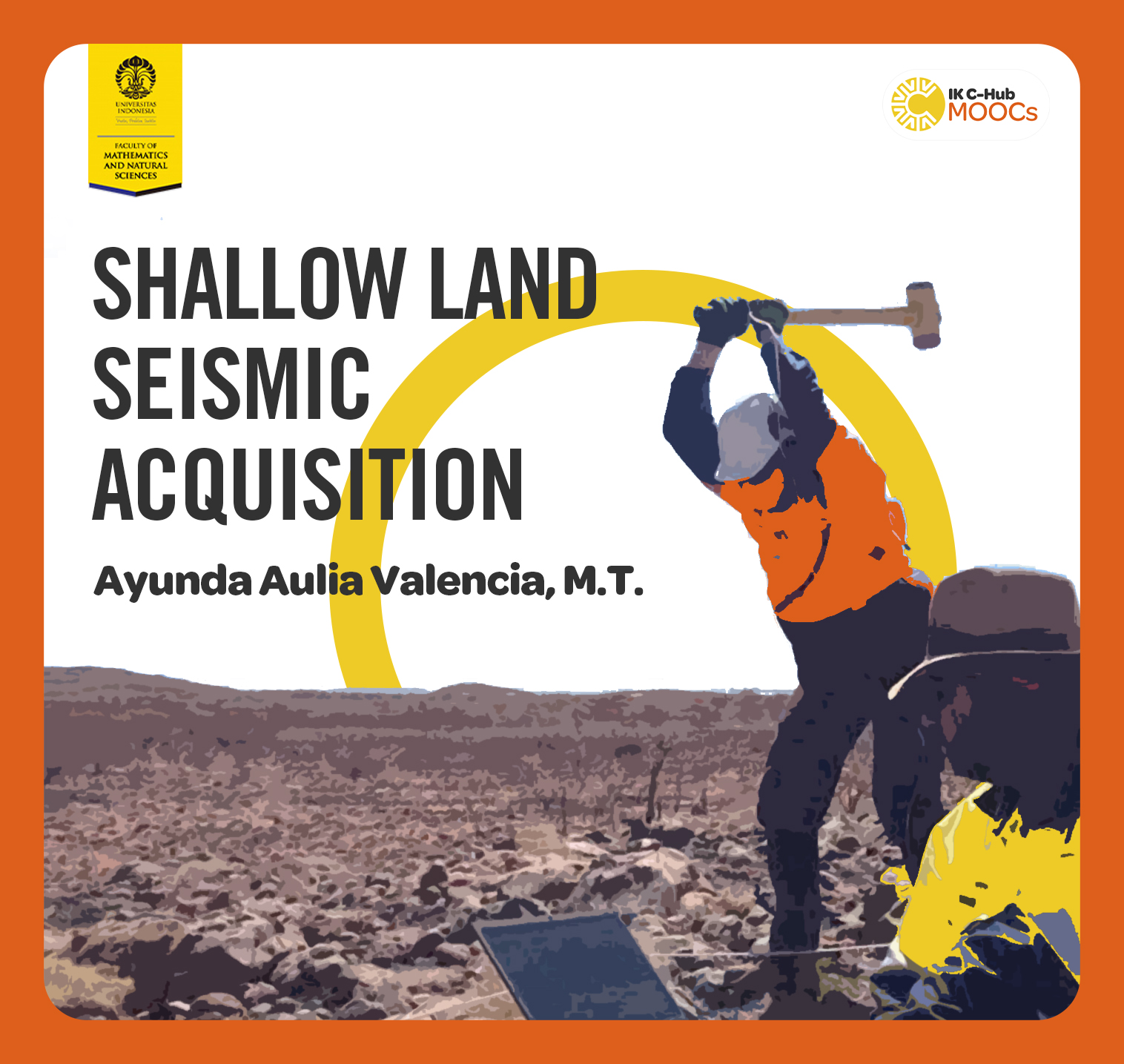
Principal Instructor
Ayunda Aulia Valencia

Course Description
This course aims to provide participants with practical skills to conduct seismic surveys in shallow geological environments. This course is self-paced and uses English as a main language, which targets general public with beginner level of prior seismic knowledge. Free and trial version of seismic software will be used in this course.
Upon completion of this course, participants will be equipped with the necessary skills and best practices required to execute shallow land seismic surveys to ensure high quality seismic data acquisition for various applications, such as engineering and 2 hazard mitigation.
Learning Objectives
(1) Understand principles of seismic acquisition including: reflection, refraction, signal analysis.
(2) Explore unique characteristics and challenges associated with acquiring seismic data in shallow subsurface environments, such as weathering layers, varying lithologies, and faults.
(3) Design seismic survey tailored to shallow subsurface objectives, while considering factors like survey area, subsurface target, and acquisition parameters.
(4) Explore seismic equipment for shallow survey along with their advantages and limitations.
(5) Data acquisition techniques for MASW and seismic refraction survey, focusing on its appropriate implementation in shallow environments.
(6) Quality control to monitor data acquisition in real-time to ensure the quality of collected data.
(7) Real-world example using a case study to enable participants to apply their knowledge in real-world scenarios.
Learning Activities
This course will be delivered using several activities:
1. Interactive lectures with formative assessments and clarifications.
2. Hands-on quality control of acquired seismic data from realworld examples will also be presented with summative assessments and clarifications.
3. Peer-to-peer and lecture-to-peer discussion.
Assessment Strategies
1. Formative assessment in the form of quizzes.
2. Summative assessment.
References
1. Yilmaz, O. (2001). Seismic data analysis (2nd ed.). Tulsa: Society of Exploration Geophysicist.
2. Robinson, E., & Clark, D. Basic geophysics (22nd ed.). SEG.
3. Evans, B., & Dragoset, W. (1997). A handbook for seismic data acquisition in exploration. Tulsa, OK: Society of Exploration Geophysicists.
4. Rosli Saad. (2018). Basic seismic refraction survey and data interpretation techniques. Pulau Pinang Malaysia: Penerbit Universiti Sains Malaysia (USM).
Language of Instruction
English
Add information about the skills and knowledge students need to take this course.

Ayunda Aulia Valencia

Cecilia Patra Dewanty